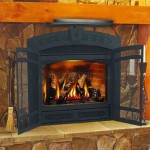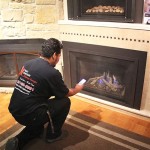Does a Gas Fireplace Need to Be Vented Outside?
Gas fireplaces have become increasingly popular in homes due to their convenience, efficiency, and aesthetic appeal. However, one common question that arises is whether or not a gas fireplace needs to be vented outside. The answer to this question depends on several factors, which we will explore in this article.
Types of Gas Fireplaces
There are two main types of gas fireplaces: vented and ventless. Vented gas fireplaces draw air from outside to support combustion and expel the exhaust gases through a chimney or vent system. Ventless gas fireplaces, on the other hand, do not require a vent system and instead rely on room air for combustion and exhaust the gases into the room.
Venting Requirements
Building codes and regulations typically require that vented gas fireplaces be connected to a proper venting system. This is because the exhaust gases produced by combustion contain harmful pollutants, such as carbon monoxide, nitrogen dioxide, and water vapor, that need to be safely removed from the home. Ventless gas fireplaces, on the other hand, may not require venting if they are certified to meet specific safety standards.
Advantages of Vented Gas Fireplaces
Vented gas fireplaces offer several advantages over ventless models. First, they are more efficient because they draw air from outside, which provides a constant supply of oxygen for combustion. This results in a cleaner burn, reduced emissions, and higher heat output. Additionally, vented gas fireplaces do not release combustion gases into the room, which can help maintain air quality and prevent the buildup of moisture.
Disadvantages of Vented Gas Fireplaces
The main disadvantage of vented gas fireplaces is that they require a vent system, which can be costly to install and maintain. Additionally, vented gas fireplaces may draw some warm air from the room, which can reduce their heating efficiency slightly.
Advantages of Ventless Gas Fireplaces
Ventless gas fireplaces have several advantages over vented models. First, they do not require a vent system, which can save money on installation and maintenance costs. Ventless gas fireplaces also do not draw warm air from the room, which can make them more efficient in heating small spaces.
Disadvantages of Ventless Gas Fireplaces
The main disadvantage of ventless gas fireplaces is that they release combustion gases into the room. This can be a concern for individuals with respiratory conditions or for those who are sensitive to chemical emissions. Additionally, ventless gas fireplaces may require more frequent maintenance to ensure proper combustion and prevent the buildup of moisture and pollutants in the room.
Conclusion
Whether or not a gas fireplace needs to be vented outside depends on various factors, including building codes, safety regulations, and personal preferences. Vented gas fireplaces offer advantages in terms of efficiency, emissions, and air quality, but they require a vent system. Ventless gas fireplaces are more affordable and efficient in small spaces, but they release combustion gases into the room and may require more frequent maintenance. It is important to consult with qualified professionals to determine the best type of gas fireplace for your home and ensure that it is properly installed and maintained for safety and optimal performance.
Gas Fireplace Venting Explained Heatilator
Gas Fireplace Venting Explained Heat Glo

Vented Vs B Vent Direct Free Dixie S
Gas Fireplace Venting Explained Heat Glo

Benefits Of Direct Vent Fireplaces

What Is A Direct Vent Fireplace Fireplaces Learning Center

Are Vent Free Gas Fireplaces Safe Ventless

Fireplace Cover To Keep Cold Air Out
.aspx?strip=all)
Benefits Of Direct Vent Fireplaces Regency Fireplace S

If You Have A Gas Fireplace It May Or Not Chimney Flue








